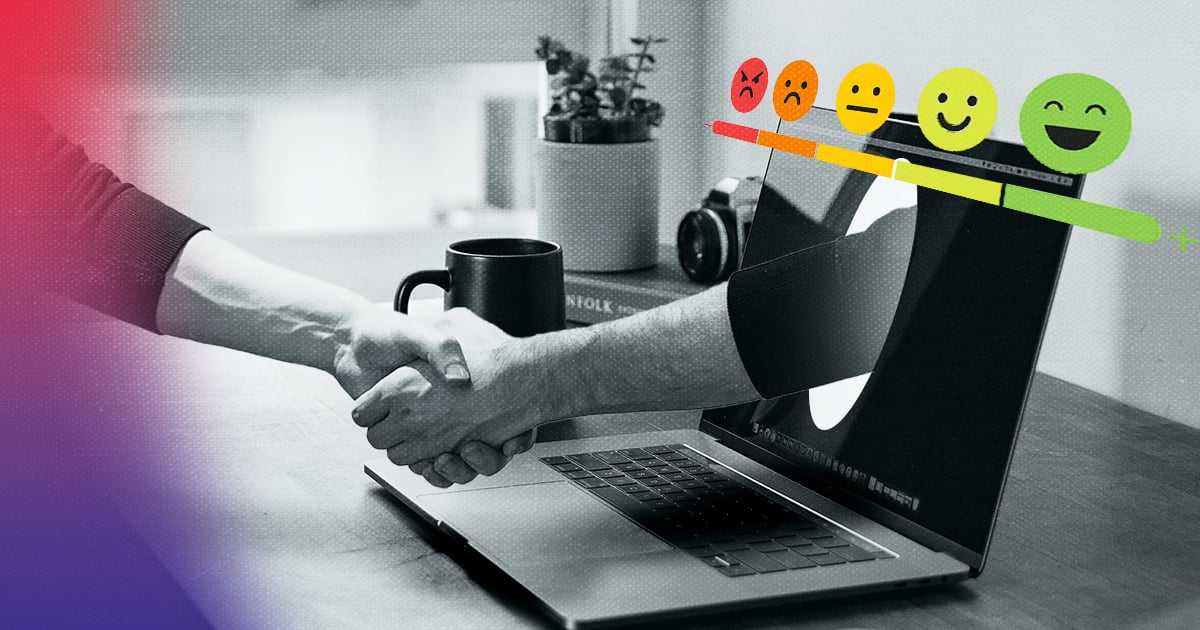
Darby Joyce
Content Marketing Coordinator
There’s no doubt that online communication has changed the way we work with each other. Between an increase in remote and hybrid working options and growing opportunities to collaborate with colleagues around the world, many more of our interactions take place behind screens. With that in mind, it’s become all the more important to understand how we present ourselves on video calls and through text, as details we might not even consider can impact others’ professional impressions of us.
In her recently published paper, “A Review of Virtual Impression Management Behaviors and Outcomes,” Kogod professor of management Hayley Blunden explores the existing research on these online impressions and offers suggestions for people hoping to be mindful of how they come across in video conferencing, emails, and messages. Typos in emails, the choice of Zoom background for an interview, and knowing where to look during a call are just a few details that can all make a difference at a crucial moment. We spoke with Professor Blunden about her findings, what they mean, and what the future of online collaboration might look like.
Kogod School of Business: What led you to explore virtual interactions and impressions in your research? What has general research on virtual interactions in management and business looked like so far?
Hayley Blunden: I have long been interested in how interacting virtually influences how we relate to one another, especially within a workplace context. Before pursuing an academic career, I worked in the private sector, where I observed the power of workplace relationships in driving results. These relationships are essentially the sum of a series of interactions.
Increasingly, our interactions with others occur virtually—not in person or face to face—whether we’re introducing ourselves in an email or engaging in a video interview. The growing importance of our virtual connections has motivated this line of research. In particular, my co-author Andrew Brodsky and I wanted to understand what is and is not currently known about how virtual interactions influence others’ impressions of us. Research on virtual interaction at work has been quite diverse thus far, stemming from multiple research traditions.
What were the methodological or more general challenges that you faced during this research, and how were those challenges resolved?
Research on virtual interaction is spread across a wide variety of fields; work on the topic is published not only in business journals but also in technology, communications, and even medical journals. Although it was a challenge to try and bring together work from all of these disparate fields, this dispersion was also one of the reasons my coauthor and I wanted to undertake this work. We wanted to understand the body of extant research on how we make impressions virtually and bring them together in one place. We identified and refined this research via an iterative database search in which we leveraged the results of each search to identify new keywords.
What are some takeaways that you hope readers take from this paper? Did you learn anything that surprised you throughout this research?
One big takeaway from this work is that virtual interaction is really quite rich in driving others’ impressions of us.
Although we may quickly fire off an email or shoot someone a text without thinking about it too much, the seemingly minor choices we make during these interactions can influence how we are viewed.”

Hayley Blunden
Professor of Management, Kogod School of Business
For example, several empirical studies – including some of my own – reveal that typos in our emails or texts can negatively impact others’ impressions of us. Just taking that extra step to double-check our writing or use a grammar-checking service can influence how we’re viewed.
That being said, our review also highlighted some important instances in which we overestimate the effort we need to undertake to manage others’ impressions of us. For example, we discuss an exciting series of studies conducted by Laura Giurge and Vanessa Bohns revealing that we often overestimate how quickly email senders expect us to respond.
What can people who are either organizing or participating in virtual interactions keep in mind to have more successful interactions and impressions overall?
Beyond those stemming from the research I’ve already mentioned, such as being attentive to avoid typos, our review highlighted other interesting findings with clear, practical implications. First, several different studies in the realm of video conferencing highlighted the value of appearing to make eye contact via video. Notably, this differs from making eye contact in person because to make ‘eye contact’ virtually, one must look at the camera rather than directly at the person they’re interacting with. Such ‘eye contact’ improved impressions across a variety of video conferencing settings ranging from interviews to medical appointments.
Second, this research reveals the often undervalued role of audio-only virtual interactions. For example, research led by Juliana Schroeder reveals that vocal cues such as pitch and speed variance play a vital role in communicating our competence, often with no additive effects from video. Our review also highlights an additional category of impression-generating behaviors that stem from the unique elements of different forms of virtual interactions, such as timestamps, the ability to carbon copy and blind carbon copy email recipients, and the backgrounds we use in our video calls. Our review of research regarding these elements revealed that those who carbon copied their supervisor were perceived more negatively, as were those with unprofessional or novelty video conference backgrounds.
What questions did this research open up that you hope to explore in the future?
In terms of future research, one fascinating question concerns the role that artificial intelligence will have in influencing some of the effects documented in prior work. For example, there are new tools that can show a video conference speaker as engaging in centered eye contact even when they may not be looking directly at the camera. If these types of tools become widespread or well-known, the positive impressions generated by making video ‘eye contact’ could be reduced or even reversed. In this case, less eye contact could be instead read as a signal that someone is engaging authentically, potentially improving impressions of them.
Is there anything you’d like to add that we should keep in mind about communicating virtually?
One often overlooked aspect of virtual communication is its permanence. Not only can I reread and forward emails, texts, and chats, but I can also record and disseminate a video conference. These features suggest that the impressions we make virtually could be more consequential than the more fleeting impressions we make in person. Virtual communication permanence is often what generates the headlines we see when virtual interaction goes wrong; people’s unthinking emails are forwarded to a client, or uncaring video calls are posted to the internet.Putting our thoughts into a virtual medium calls for an elevated level of intentionality."

Hayley Blunden
Professor of Management, Kogod School of Business
It is my hope that this paper can help us think more intentionally about the messages we want to relay and how we can successfully relay them.
Learn more about the research being conducted by Kogod's faculty here.
